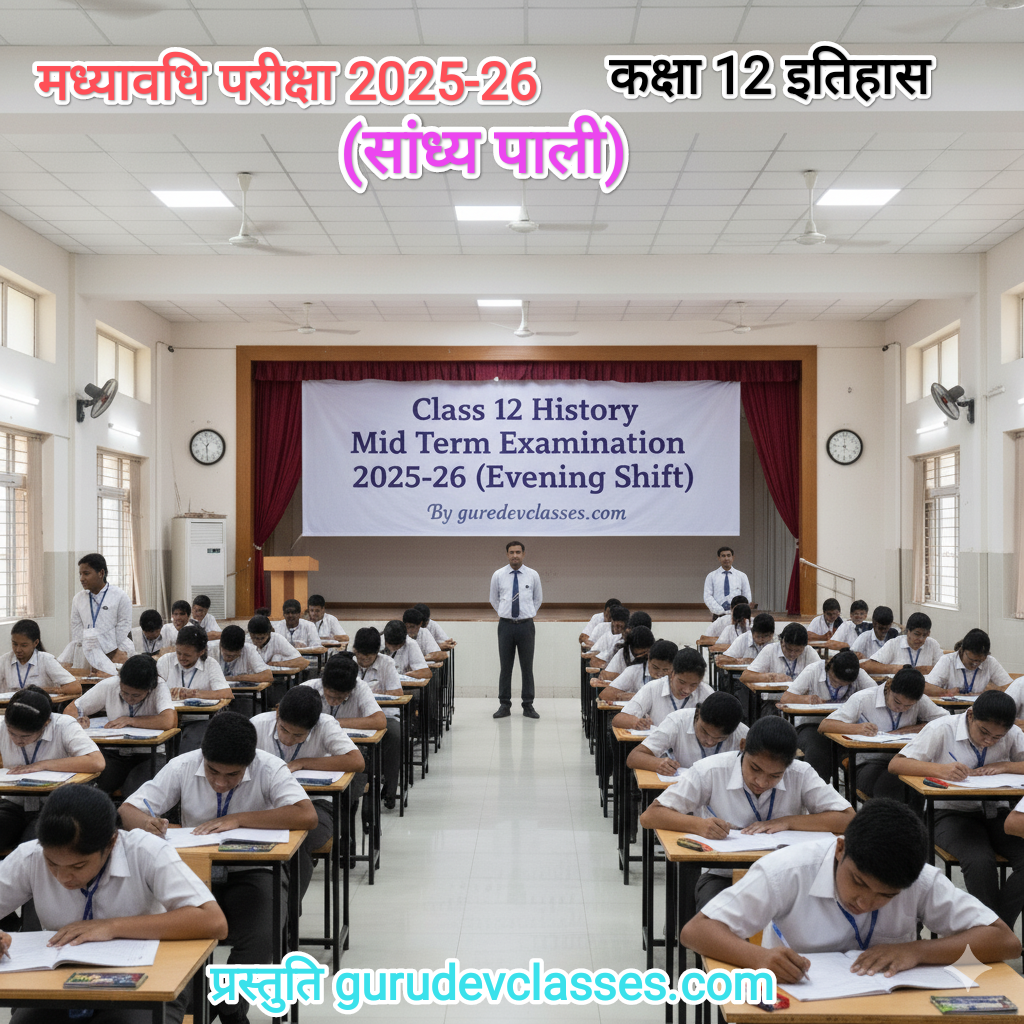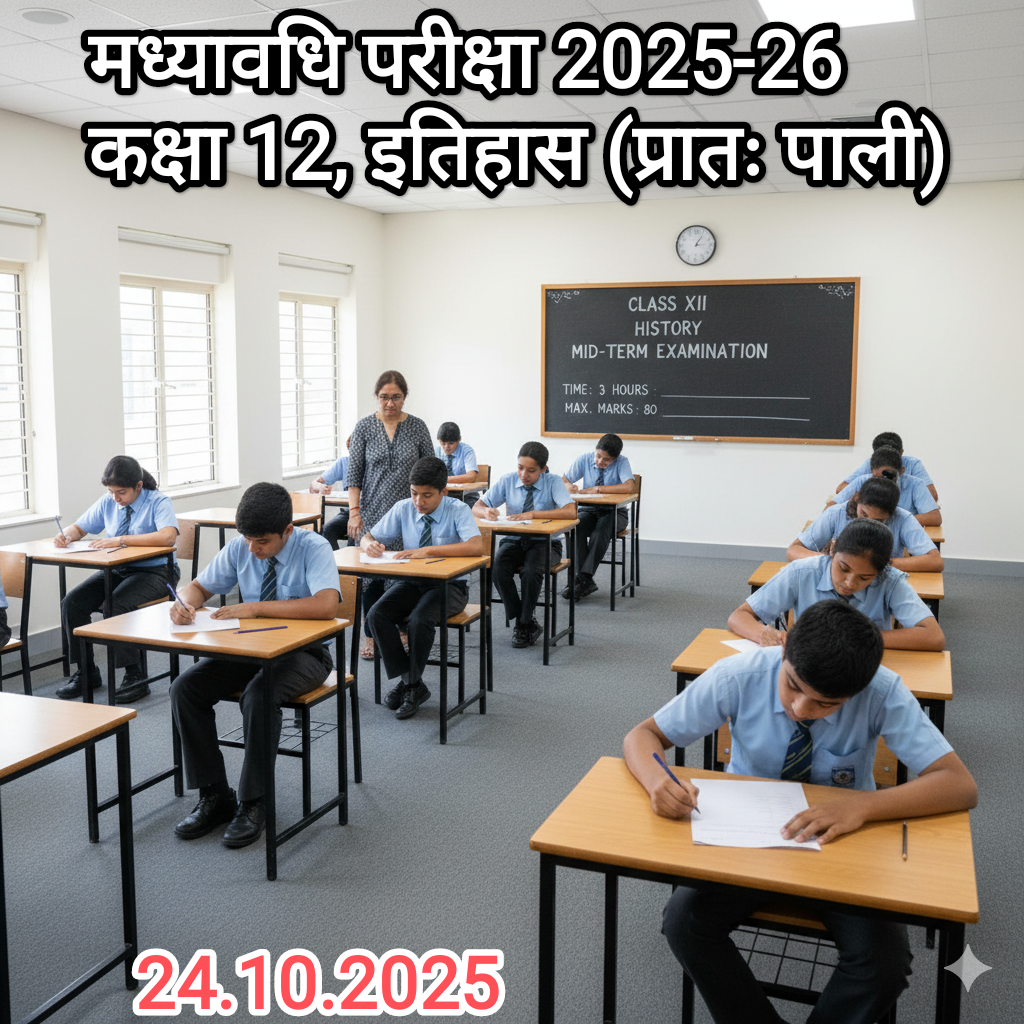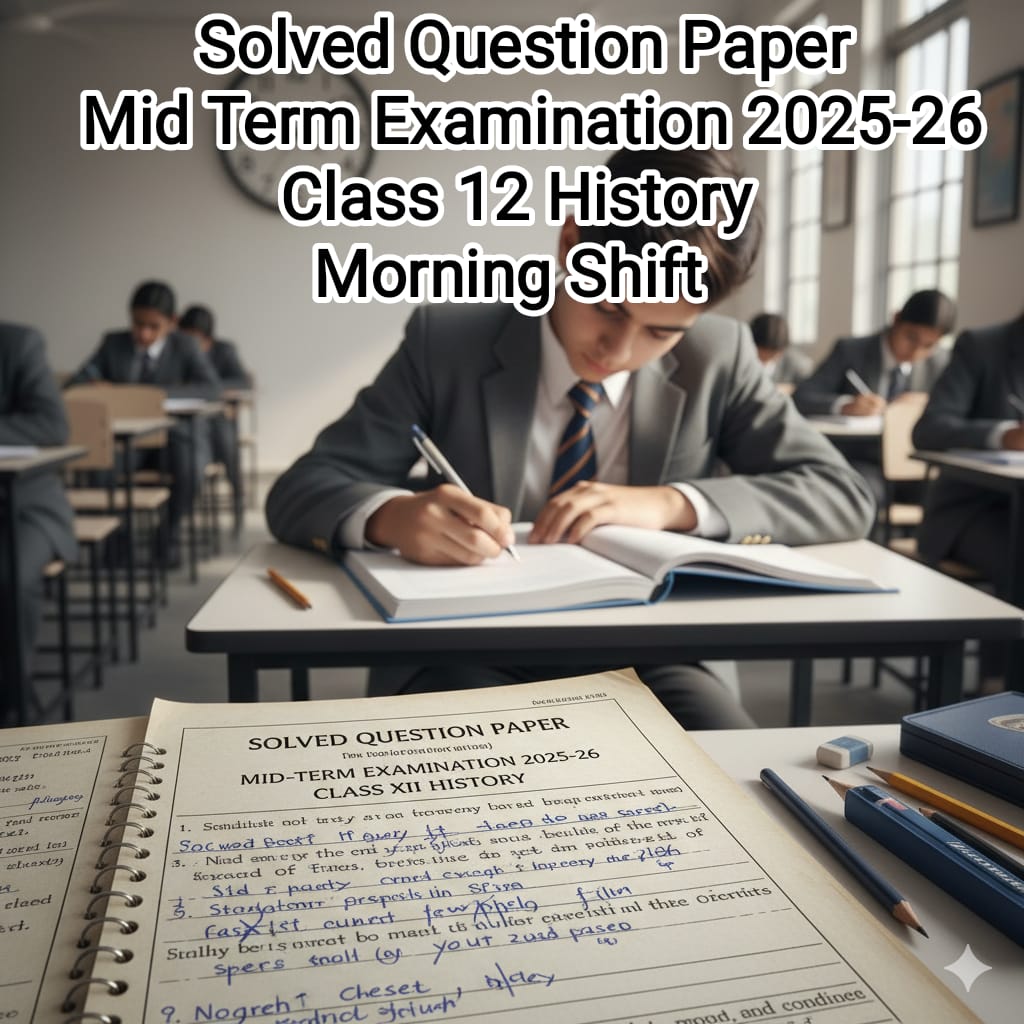3-mark and 8-mark questions
🔶 3 Marks Questions
❓Q1. Explain any three features of the fortifications in Vijayanagara.
📚 [NCERT + CBSE 2011 (Delhi)]
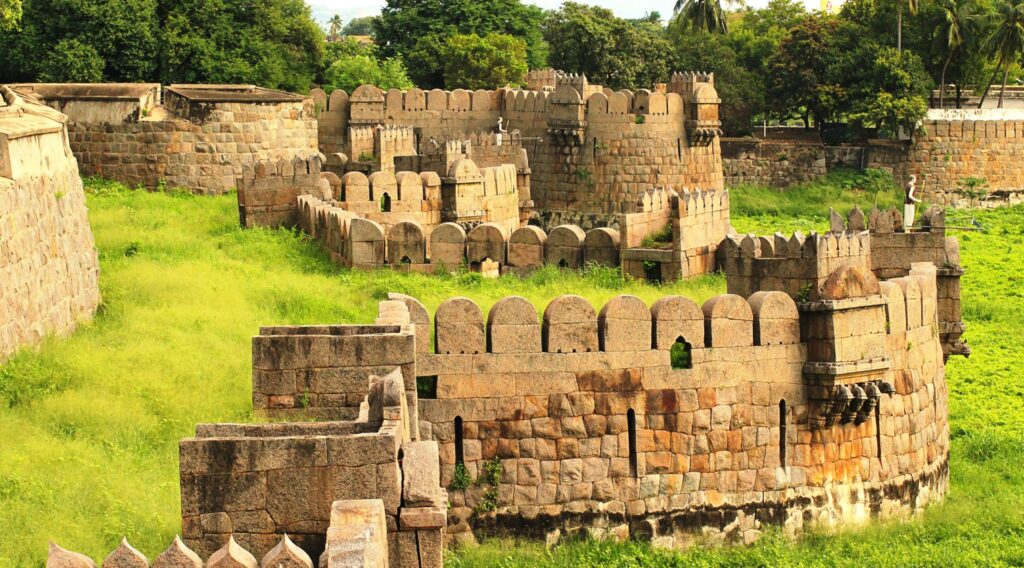
Answer:
- The walls were built using interlocking stone blocks without mortar, which made them strong and earthquake-resistant.
- There were seven concentric lines of fortifications, enclosing the city layer by layer.
- The fortifications enclosed agricultural lands, water resources, temples, and habitations, making it a self-sustaining defensive system.
❓Q2. Describe any three features of the temples constructed in the Vijayanagara Empire.
📚 [NCERT + CBSE 2014 (Delhi)]
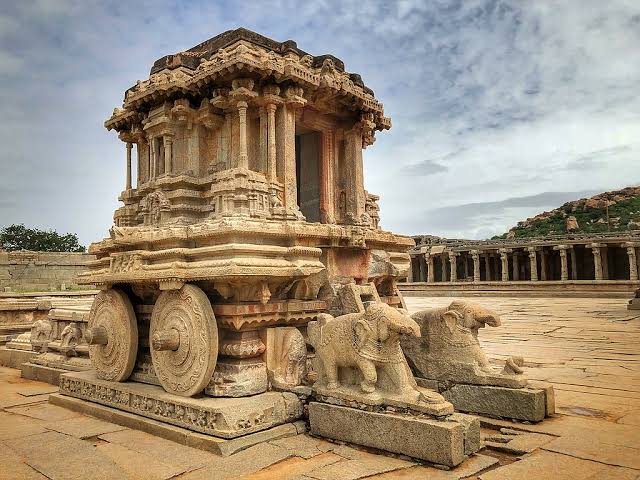
Answer:
- Temples had large gopurams (gateway towers) that dominated the skyline.
- They had mandapas (pillared halls) used for various social and religious ceremonies.
- Temples served not just religious purposes but also were centers of economic and cultural activity.
❓Q3. Mention three causes for the decline of the Vijayanagara Empire.
📚 [NCERT + CBSE 2017 (Delhi)]

Answer:
- The empire suffered a major defeat in the Battle of Talikota in 1565, where it was attacked by the combined forces of Deccan Sultanates.
- The capital city of Hampi was plundered and destroyed, leading to administrative collapse.
- The absence of a strong successor and internal weaknesses led to further decline.
❓Q4. Write any three contributions of Krishnadeva Raya to the Vijayanagara Empire.
📚 [CBSE 2010 (Delhi)]
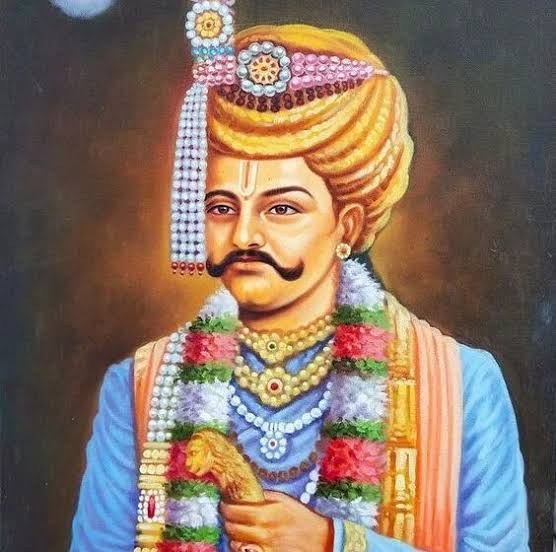
Answer:
- He led successful military campaigns against Orissa, Bijapur, and Golkonda.
- Patronized literature and fine arts in many languages (Telugu, Sanskrit, Kannada, Tamil).
- Authored the Telugu literary work “Amuktamalyada”, highlighting good governance.
❓Q5. Explain any three features of the Mahanavami Dibba.
📚 [CBSE 2019 (Delhi)]
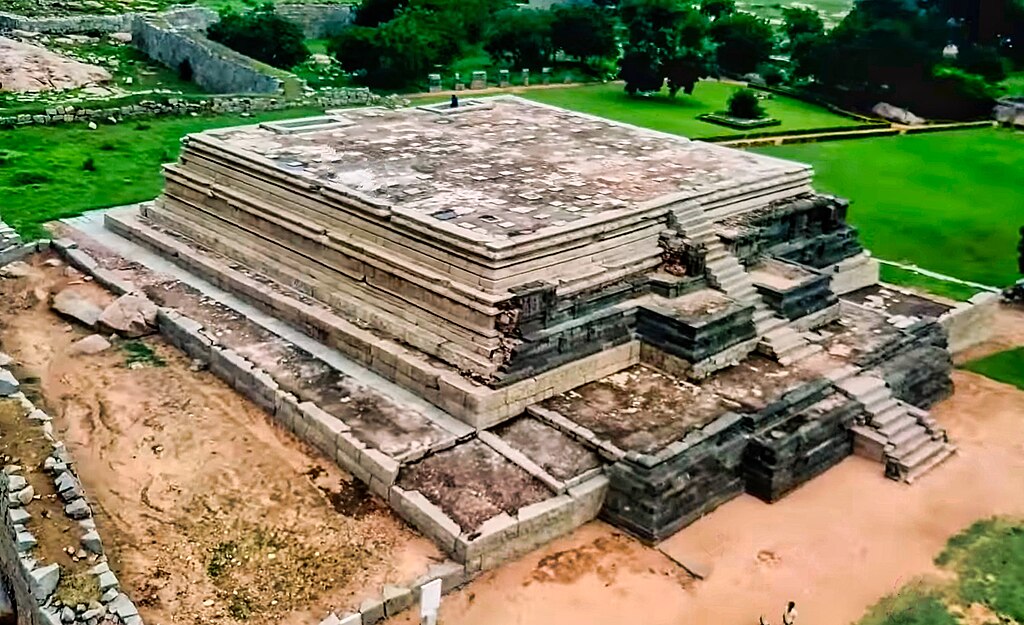
Answer:
- It was a highly decorated platform from where the king watched processions and ceremonies.
- The platform had beautiful carvings of horses, soldiers, and dancers.
- It was the site for Navaratri celebrations and royal events.
❓Q6. What was the significance of the Virupaksha Temple in the Vijayanagara Empire?
📚 [NCERT + CBSE 2005 (Delhi)]
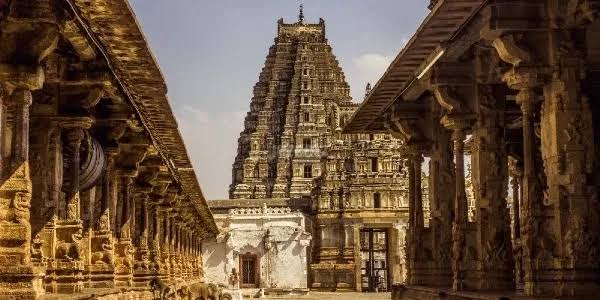
Answer:
- Dedicated to Lord Shiva and associated with the guardian deity of the empire.
- It was an important pilgrimage center and drew devotees from distant regions.
- The temple became economically and socially active, with bazaars and mandapas surrounding it.
❓Q7. Why were foreign travelers impressed by Vijayanagara? Mention any three reasons.
📚 [CBSE 2012 (All India)]
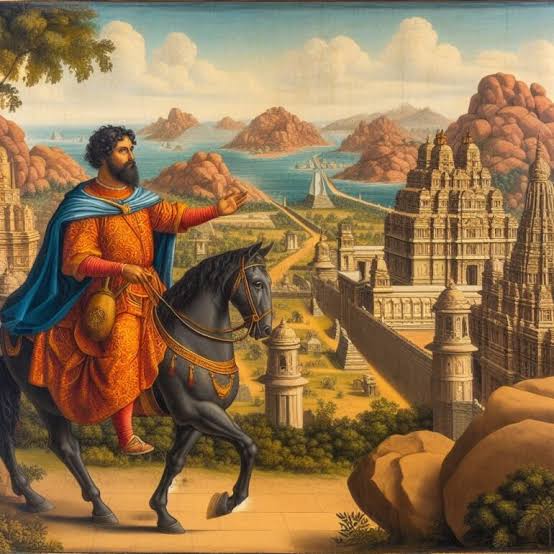
Answer:
- The size and grandeur of the city, with massive walls and bustling markets.
- The architectural beauty of temples and public buildings.
- The well-organized administration and urban planning, as described by Domingo Paes and Abdur Razzaq.
8 Marks Questions
❓Q1. Describe the main features of the Vijayanagara Empire and the reasons for its fame.
📚 [NCERT + CBSE 2009, 2022, 2024]
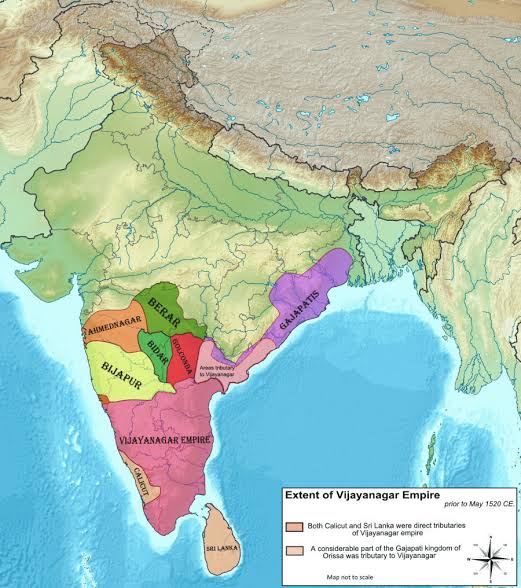
Answer:
- Founded in 1336 by Harihara and Bukka, it emerged as a powerful South Indian empire.
- The capital city Hampi was known for its temples, palaces, and urban layout.
- Its fortifications were unique, built without mortar using interlocked stones.
- The empire developed an efficient irrigation system with tanks and canals.
- Temples like Virupaksha and Vittala were cultural and economic hubs.
- Krishnadeva Raya, the greatest ruler, promoted military strength, literature, and architecture.
- Foreign travelers like Domingo Paes and Abdur Razzaq praised its wealth and grandeur.
- It became a center of trade, religion, and learning, attracting global attention.
❓Q2. Discuss the features of the sacred and royal centers in the Vijayanagara Empire.
📚 [CBSE 2014 (All India), 2020 (Delhi)]
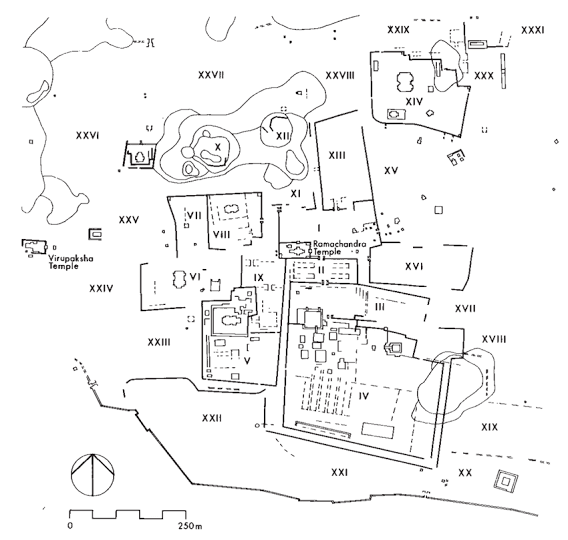
Answer:
- The Royal Centre had structures like Mahanavami Dibba, Lotus Mahal, Hazara Rama Temple.
- Used for royal rituals, public durbars, and military parades.
- Contained palaces and enclosures used by kings and nobles.
- The Sacred Centre was along the Tungabhadra River.
- It had major temples like Virupaksha, Vittala, and Krishna temples.
- Temples had gopurams, mandapas, and beautiful carvings.
- The sacred center was a hub of religious activity and pilgrimage.
- Both centers reflected the fusion of religion, power, and architecture.
❓Q3. What were the various sources used by historians to reconstruct the history of Vijayanagara? Explain.
📚 [NCERT + CBSE 2003, 2018, 2023]
Answer:
- Archaeological remains like temples, sculptures, and fortifications at Hampi.
- Inscriptions on temple walls, grants, and pillars provide political and social information.
- Literary sources such as “Amuktamalyada” by Krishnadeva Raya.
- Foreign travelers’ accounts: Domingo Paes, Fernao Nuniz, Abdur Razzaq.
- Shilashasanas that mention land grants and religious endowments.
- Texts like Rayavachakam that describe court rituals.
- Maps, sketches, and surveys by British archaeologist Colin Mackenzie.
- Coins and seals also give insight into administration and economy.
❓Q4. Examine the role of temples in the cultural and economic life of Vijayanagara.
📚 [CBSE 2007, 2015, 2021]
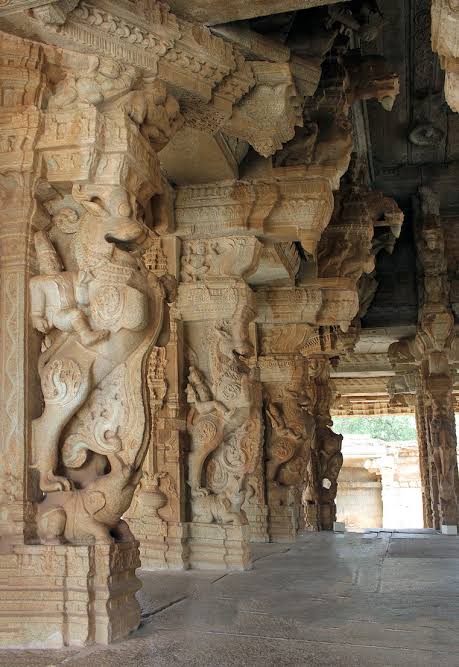
Answer:
- Temples were not just religious places but also economic and social hubs.
- They received large donations from kings, nobles, and merchants.
- Acted as banking centers and controlled lands.
- Employed priests, musicians, dancers, artisans, and servants.
- Held festivals and rituals like Mahanavami, attracting people from distant areas.
- Markets and bazaars developed around temple complexes.
- Gopurams and mandapas were sites of public activity.
- Promoted art, music, literature, and architectural excellence.
❓Q5. Describe the military architecture and urban planning of the Vijayanagara Empire.
📚 [CBSE 2008, 2011, 2016]
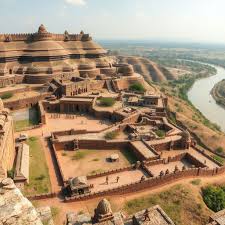
Answer:
- Forts had interlocking stone walls without mortar for stability.
- Seven concentric fortification walls protected different zones.
- Enclosed not just royal buildings but also villages, temples, and fields.
- Entry gates were monumental and had watch towers.
- Inside city had wide roads, markets, temples, and residential areas.
- Canals and tanks supported agriculture and urban needs.
- City was divided into sacred and royal centers for better governance.
- Urban planning showed a blend of religious, administrative, and military concerns.
✅ 6. Describe the architectural features of the Vijayanagara Empire.
(CBSE Board PYQ: Repeated – 2009, 2013, 2016, 2019)
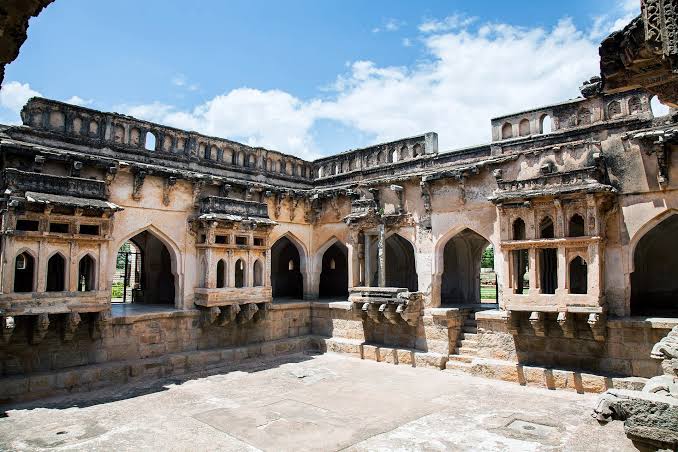
Answer:
- Sacred and Royal Centres: City divided into sacred (temples like Virupaksha) and royal (palaces, durbar hall) areas.
- Use of Granite: Temples and buildings made using hard granite, due to local availability.
- Gopurams and Mandapas: Towering gateways (gopurams) and large pillared halls (mandapas) in temple architecture.
- Hampi as Capital: Hampi had massive fort walls, ceremonial roads, markets, temples, and water structures.
- Raya Gopuram: High entrance towers built in Dravidian style, visible from long distances.
- Water Management: Channels, tanks, and aqueducts to collect and store water.
- Sculptural Art: Pillars and temples had beautiful carvings of gods, animals, and scenes from epics.
- Distinct Temple Complexes: Temples like Hazara Rama with narrative panels of Ramayana.
✅ 7. Describe the features of the fortification of Vijayanagara Empire.
(CBSE Board PYQ: 2010, 2015, 2018)
Answer:
- Massive Fort Walls: Built using wedge-shaped granite blocks without mortar.
- Seven Rings of Fortification: The city was enclosed in 7 concentric fort walls for defense.
- Moats and Watchtowers: Wide moats, watchtowers, and entry gates enhanced security.
- Multiple Gateways: Designed with zigzag paths to slow down enemy invasion.
- Inner and Outer Forts: Royal centre had an inner fort, while the commoners lived in the outer areas.
- Defensive Planning: Strategic placement of military cantonments and storage areas.
- Surveillance System: Soldiers and guards kept watch over the territory using high structures.
- Use of Natural Topography: Hills and rocky terrain were integrated into the fort design for added strength.
✅ 8. Describe the significance and features of the Mahanavami Dibba in the royal centre of Vijayanagara.
(CBSE Board PYQ: 2006, 2012, 2017)

Answer :
- Symbol of Royal Power: Built by Krishnadeva Raya to celebrate victories.
- Platform for Celebrations: Mahanavami festival and ceremonies held here.
- Massive Structure: About 12 meters high stone platform with steps on one side.
- Religious and Cultural Role: Worship of goddess Durga and royal rituals held here.
- Depictions of Processions: Walls show carved figures of horses, elephants, dancers, and musicians.
- Public Display of Power: Used by the king to showcase wealth and might to foreign guests.
- Strategic Viewpoint: From here, the king could review the army and festivities.
- Central Location: Situated at the heart of the royal centre for easy access.
Q9. How was the festival of Mahanavami (Ramnavami) celebrated at the Mahanavami Dibba in Vijayanagara? Explain.
(CBSE Board PYQ – Frequently asked, including 2014, 2016, 2018, 2020)
📌 Answer:
The festival of Mahanavami (also called Ramnavmi) was one of the most grand royal events celebrated in the Vijayanagara Empire. The celebrations were centered around the Mahanavami Dibba, a massive platform built in the Royal Centre.
Here are the eight major points describing how it was celebrated:
- 🏛️ Royal Platform (Mahanavami Dibba):
The celebrations were held at a high platform called Mahanavami Dibba located in the Royal Centre.
This platform provided a commanding view of the surrounding area.
- 👑 King’s Participation:
The king participated with full royal glory, wearing rich garments and jewels.
He was seated on a throne on top of the platform to oversee the festivities.
- 🐘 Military Parade:
There was a grand military parade including elephants, horses, chariots, and soldiers.
It showcased the power and might of the empire.
- 🎭 Cultural Performances:
The event included music, dance, and dramas performed by artists.
It reflected the rich cultural traditions of the empire.
- 🎁 Gifts and Tribute:
The subordinate chiefs and nobles presented valuable gifts to the king.
It was a way to show loyalty and respect to the ruler.
- 🍛 Feasting and Distribution of Prasadam:
A grand feast was organized for the royal family, priests, and invited guests.
Food and prasadam (blessed food) were distributed to the common people as well.
- 🔱 Religious Rituals and Worship:
The royal priest conducted rituals to Goddess Durga and other deities.
Idols were brought out in processions, decorated with flowers and ornaments.
- 🏹 Public Participation and Joy:
Common people gathered in large numbers around the Royal Centre.
The atmosphere was festive, with fireworks, music, and public entertainment.
📌 Conclusion:
The Mahanavami celebrations at the Mahanavami Dibba highlighted the imperial grandeur, military strength, cultural richness, and religious devotion of the Vijayanagara Empire. It reinforced the king’s power, legitimacy, and connection with the divine.


